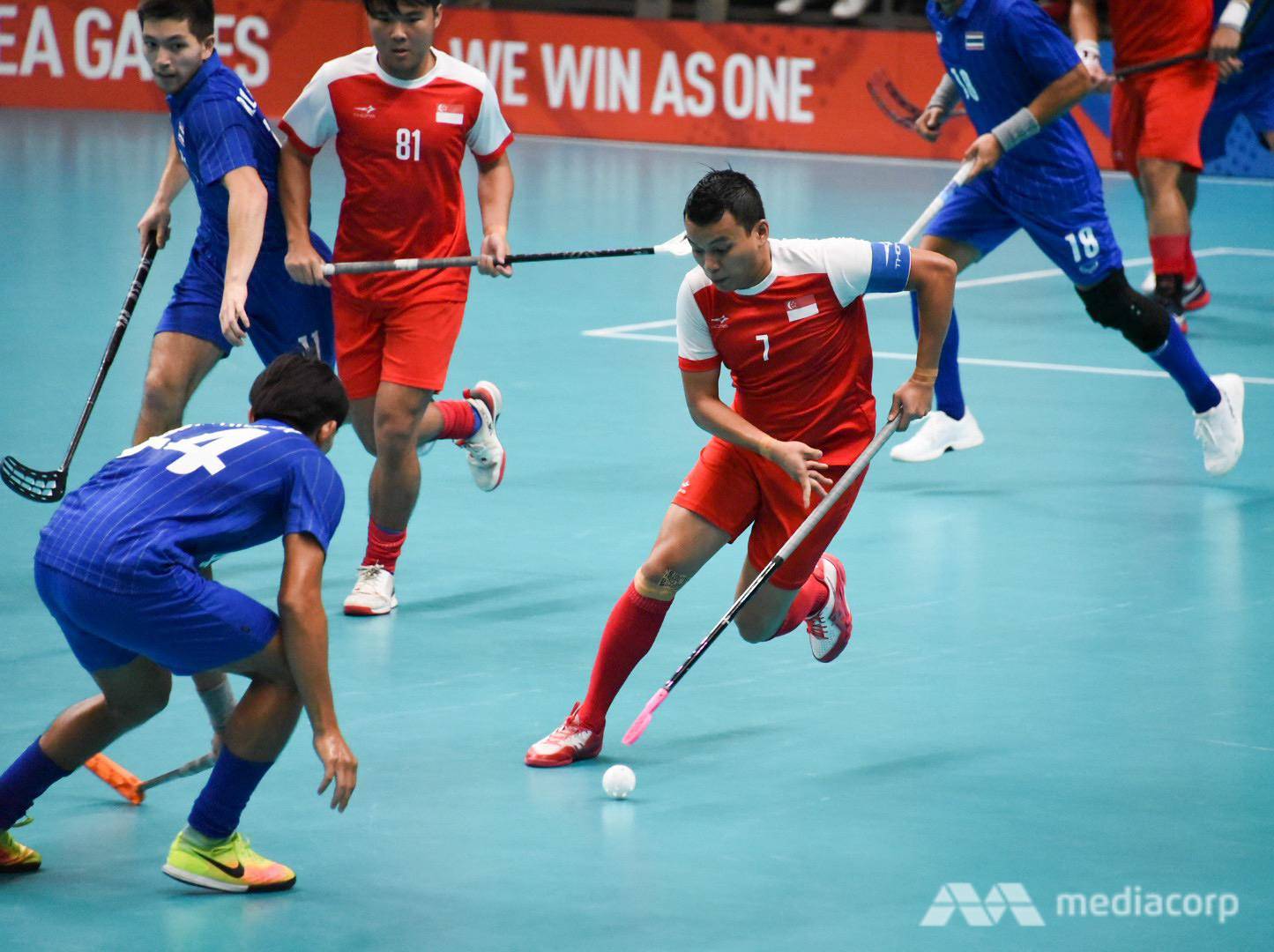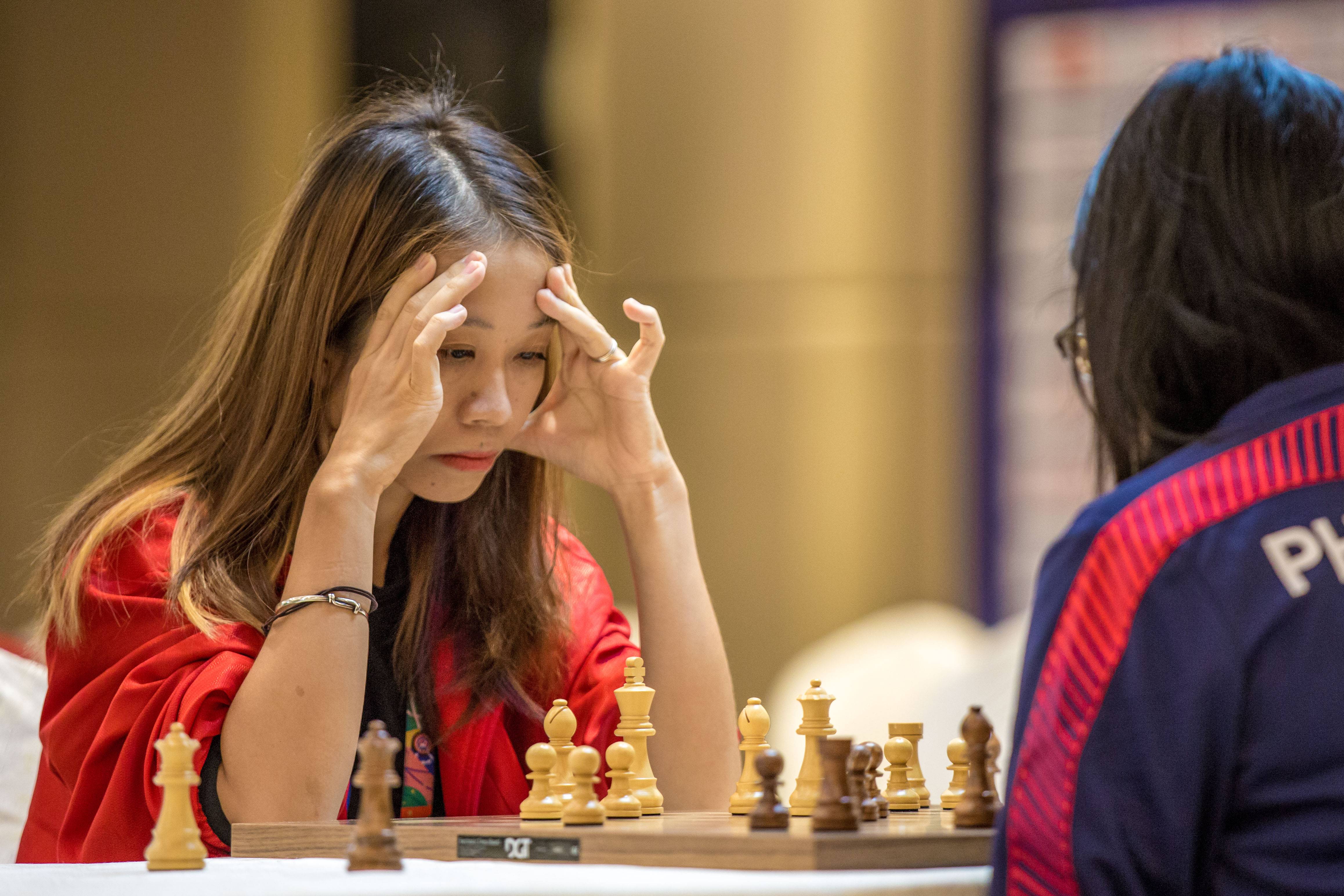SINGAPORE: In with the new, out with the old. Singapore’s early successes at the 30th Southeast Asia (SEA) Games provide an interesting peek into where the country’s sporting future could lie.
We said goodbye to water polo gold – and hello to an ice-skating one.
Once the regional queens of netball, we failed for the second time in succession at the Games. Instead, our women are floorball champs.
READ: Commentary: Jo Schooling, a hunted man on a quest for gold and so much more
It’s a pity that there’s no indoor skydiving competition in the Philippines; we would’ve been a shoo-in seeing how we already have a world champion.
Cheyenne Goh in action at the 30th SEA Games. (Photo: SNOC)
To say that this edition of the SEA Games is a bloated one would be an understatement.
There are 56 sports in total. Some new, some there for demonstration purposes and some there to showcase the traditions of not just the region, but also of wider Asia.
This isn’t a slight on the Philippines as organisers. Previous editions also have had sports running into the dozens. It is unnecessary and wasteful and, as seen in the build-up to the Games, only adds to the logistical overload.
READ: Commentary: Let’s hold off judging the Philippines as SEA Games host
Going forward, as sports organisers mull over how to lessen the ecological impact of multi-event competitions, they must also put more thought into the types of sports to have.
While it makes sense to have arnis – the national martial arts of the Philippines – at this Games, it is silly to include kurash, a type of folk wrestling from Central Asia and sambo, a Soviet-era combat sport.
By that token, why not have kabbadi? Its Indian origins are a lot closer to this region.
With elements of judo, karate, boxing, Greco-Roman wrestling and more, sambo was created to train the forces of the Soviet Union and is still taught in the Russian army. (Photo: AFP/Sergei Gapon)
The absurdity does not end there.
At this Games, there is underwater hockey, indoor hockey and floorball. Indoor hockey has just five countries competing. Floorball has five now too – at its last appearance in 2015, there were only two sides.
READ: Commentary: Why Japan shifted the Olympic marathon from Tokyo to Sapporo
ARE THESE EVEN SPORTS?
Singapore may be ruling the waves at the underwater hockey arena, but is it too niche a sport to have at a major sporting competition?
The sad thing is, there is no place for hockey at these Games. Yes, the regular version – played outdoors … on a (synthetic) field. Table-tennis and badminton apart, not many Southeast Asian countries qualify for team sports at the Olympics.
But field hockey is a sport that both Malaysia and Singapore have participated in at the Olympics; the 2019 SEA Games snub is a curious one.

Singapore’s Syazni Ramlee dribbles past a Thai player in their floorball match at SEA Games 2019. (Photo: Matthew Mohan)
And then there is chess. We’ve all asked the question at some point in our lives, haven’t we? Is it a game or is it a sport? Well, I’ll tell you this much: A sport it ain’t.
When bridge turned up at the Asian Games in Indonesia last year, I wrote a commentary saying card games (or board games for that matter) have their own competitions where participants can vie for glory.
READ: Commentary: Running may help you live longer but more isn’t necessarily better
If we accept that a sport should generally have a level of athleticism involved, then the lack of physical emphasis in such games mean that they really shouldn’t be taking their place alongside sports.

Gong Qianyun in action at the SEA Games 2019 women’s rapid chess category. (Photo: SNOC)
Same goes for chess. End of story.
JUST PLAIN COMMON SENSE
We know there are all these behind-the-scenes jockeying and horse trading – motivated by self-interest, politics, etc. – for getting a sport included at the SEA Games or even at the Asian Games.
But if you insist on shoehorning a random sport into a multi-event games, at least make it telegenic.
One of the reasons why I’m so against underwater hockey is that no one can see what’s going on unless they look at a screen. And that’s provided there is a screen, of which there is no guarantee.
It’s telling when the photos sent by Sport Singapore from the underwater hockey venue consists solely of competitors standing in, or by, the pool. There are no action shots.
Players from the Singapore men’s underwater hockey team. (Photo: SNOC)
Wouldn’t it have been better to have ultimate Frisbee? Now, that’s an absorbing, visually appealing pursuit we can all get behind – one which has a lot more weekend warriors than say kurash or indoor hockey.
The thinking of the organisers these days would seem to suggest: Find a sport that at least one country is good at, so they can get to go home with something.
Southeast Asian nations will never progress if they continue to take short-sighted approaches. Surely the purpose of the SEA Games is for it to be a launchpad to bigger and more prestigious competitions.
THE SINGAPORE QUESTION
And where does Singapore fit into all of this? This brave new world of chessboards, wetsuits and plastic “hockey” sticks.
Coach Fandi Ahmad’s comments after Singapore’s woeful showing in football gives an insight into how sporting talent is viewed here.
“I don’t think we have much talent in Singapore,” he reportedly said.
“We have numbers but not really big numbers … Our players are mainly part-timers, students and national servicemen. So we can’t ask for more.”
READ: Commentary: Is it mission impossible for Young Lions at the SEA Games?
He’s right. And his comments are applicable to sports beyond football.
There is very little talent to go around, especially when youths are also pursuing activities like floorball, skateboarding and sitting behind games consoles.
Sport is not just an expression of athleticism, it is also a reaction to one’s environment. Floorball, one can argue is safer than hockey and it can be held in schools’ multi-purpose halls and not be subject to the whims of the weather; you can see why it has this broad appeal.
Underwater hockey is a novelty, and there will always be people looking out to pursue different sports.
And when the reach of such sports broadens, its proponents and gatekeepers will always want it included in big events, like the Asiad or the Olympics. For them, it’s all about clout – which in turn brings in funding and commercial revenue.
Then there’s also the elephant in the room: E-sports.
Again, gamers have their own events and competitions where they can take part in. They are part of a multi-billion dollar industry, and are by no means a niche endeavour.
I mean, we don’t see swimming and squash knocking on the e-sports’ Fortnite World Cup door – begging to be included as some sideshow.
Teenage gamers worldwide are shunning mainstream education for a booming e-sports scene with millions of dollars in prize money on offer. (Photo: AFP/Roslan Rahman)
But with many now actively into gaming, is it any wonder that national sports bodies don’t mind having them enter the sporting mainstream. Their line of thinking: If we are not going to get swimmers, runners and footballers, at least we should use our couch warriors!
READ: Commentary: Why aren’t there more Singaporean CEOs?
And like indoor skydiving, this could be the way to beat a new path to glory: Participate in a niche, newfangled “sport” where there is narrow competition. Then, as the Singapore saying goes: “We sure win one!”
No shame in that, I guess.




